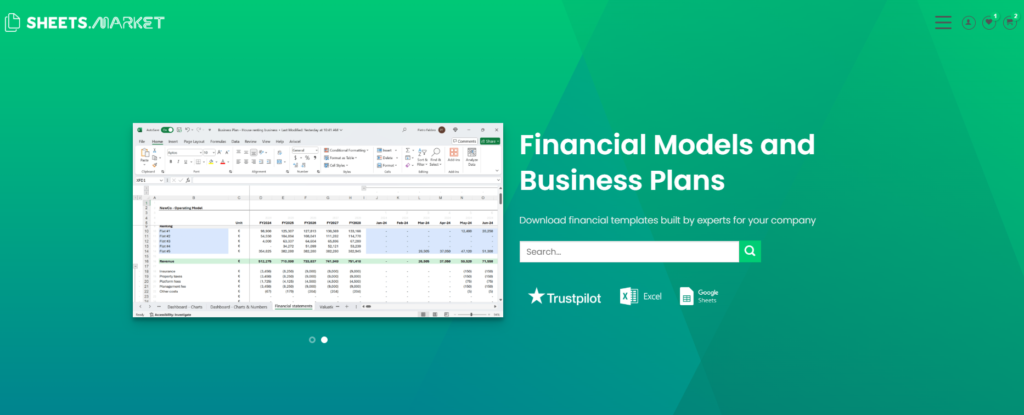Business Planning & Strategy, Financial Models
Bar Business Model: Costs, Revenue Potential & Profitability
A bar operates in a premium gross-margin, discretionary spending category where profitability depends on seat utilization, alcoholic beverage mix, and operational throughput. With relatively stable ingredient costs and favorable pricing power, bars generate strong margins when operators manage labor schedules, product waste, and peak-hour monetization with discipline. The model thrives on location, ambiance, and velocity—not variety or scale.
Asset Configuration
CapEx is moderate to high, driven by bar infrastructure, refrigeration, point-of-sale systems, and design investment. A standard urban bar spans 1,500 to 3,000 sq. ft., balancing seating, bar counter capacity, and standing room.
| Asset Category | Cost Range (USD) | Notes |
|---|---|---|
| Bar Buildout and Fixtures | 40,000 to 80,000 | Bar counter, bar backs, underbar refrigeration, draft system |
| Seating, Tables, Ambient Lighting | 25,000 to 45,000 | Indoor furniture, mood lighting, wall treatments |
| Kitchen Equipment (if food served) | 15,000 to 30,000 | Light cooking, plating, or cold food service setup |
| POS, Payment, Inventory Systems | 10,000 to 15,000 | Pour tracking, tab management, inventory control |
| Licensing, Branding, Initial Inventory | 20,000 to 35,000 | Liquor license, first orders, menu design |
Total CapEx: 110,000 to 205,000 USD, with regulatory and design factors influencing final cost.
Revenue Model
Revenue is primarily driven by alcoholic beverages, particularly cocktails, draft beer, and spirits, with strong margins. Upsell opportunities include signature drinks, bottle service, bar food, and events or private bookings.
Annual Revenue Potential – 2,000 sq. ft. Urban Bar (80 Seats, 6 Days/Week Operation)
| Revenue Stream | Volume Assumption | Annual Revenue (USD) |
|---|---|---|
| Alcohol Sales (beer, spirits, wine) | 1,200 orders/week at 12 USD avg. | 748,800 |
| Cocktails and Signature Drinks | 700 orders/week at 16 USD avg. | 582,400 |
| Bar Food / Small Plates | 500 orders/week at 10 USD avg. | 260,000 |
| Events, Private Rentals, Min. Spends | 2 events/week at 1,500 USD avg. | 156,000 |
| Merchandise and Takeaway | 500 per month avg. | 6,000 |
| Total | 1,753,200 |
Bars in nightlife districts or with niche positioning (craft cocktails, speakeasies) can exceed 2.5 million USD/year. Locations with poor scheduling or generic offerings often cap below 1 million USD.
Operating Costs
COGS is structurally low on beverages (15 to 25 percent), with food driving higher variable cost. Labor cost is significant due to bartender skill requirements and late-night scheduling. Licensing, security, and cleaning are fixed overheads.
| Cost Category | Annual Cost Range (USD) |
|---|---|
| Cost of Goods Sold | 350,000 to 430,000 |
| Wages and Payroll | 400,000 to 480,000 |
| Rent, Utilities, Insurance | 180,000 to 240,000 |
| Marketing, Promotions, Events | 60,000 to 90,000 |
| Licenses, Security, Cleaning | 50,000 to 75,000 |
| POS, Tech, Admin | 25,000 to 35,000 |
| Total Operating Costs | 1,065,000 to 1,350,000 |
EBITDA = 1,753,200 – 1,065,000 to 1,350,000 = 403,200 to 688,200 USD
EBITDA Margin = 23.0% to 39.3%
Efficient operators in prime locations, with controlled food operations and consistent traffic, routinely exceed 30 percent EBITDA margins. Overbuilt bars with high payroll and underutilized space often operate in the 20 to 25 percent range.
Profitability Strategies
Profitability in a bar is driven by hourly yield, alcohol mix control, and labor leverage.
Begin with prime-hour engineering. Target peak operating hours (6 PM to 1 AM, Thursday to Saturday) with high-margin signature cocktails, drink bundles, or promotions that increase revenue per occupied seat per hour. Design staffing, prep, and restocking around these windows.
Maximize gross margin via drink mix. Track COGS per cocktail and rotate low-yield items off the menu. Use well-paired upsells (e.g., Old Fashioned + snack pairing) to lift spend. Keep beverage COGS under 22 percent, food under 30 percent, and track variances weekly.
Implement labor as a performance lever. Cross-train barbacks and servers, use incentive-based scheduling, and minimize dead shifts. Labor cost should stay below 30 percent of revenue, including tips.
Add non-alcoholic margin: branded mixers, mocktail options, takeaway bottled drinks. These command near-beverage prices with 60 to 80 percent gross margin.
Lastly, institutionalize event monetization. Private bookings, theme nights, and sports screenings should drive >10 percent of annual revenue. Use minimum spend agreements and dynamic pricing based on peak dates.
So what?
A bar is not just a social venue – it is a margin-rich, time-sensitive, experience-monetizing operation. Profitability depends on gross margin yield per hour, labor precision, and alcohol-focused upselling. Operators who structure prime-time throughput, limit waste, and layer high-margin services can achieve 23 to 39 percent EBITDA margins on 1.7 million USD revenue, with CapEx under 210,000 USD. In the bar business, product flows fast—but margin flows from control.

Are you considering opening your Bar business? Download the comprehensive Bar Business Financial Model Template from SHEETS.MARKET to simplify your financial planning. This tool will help you forecast costs, revenue, and potential profits, making securing funding and planning for success for your Bar business easier.



